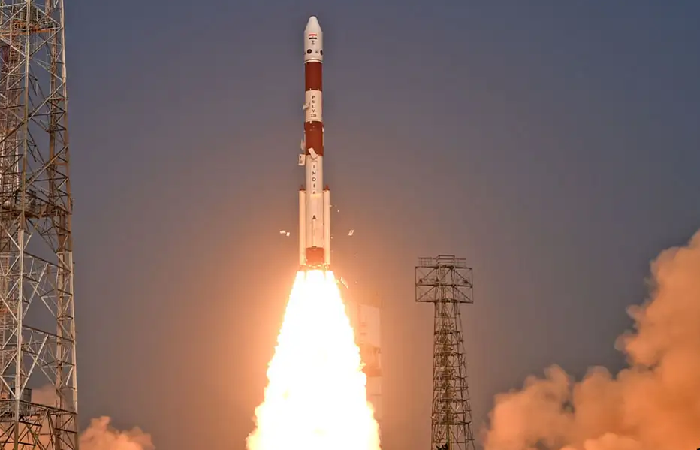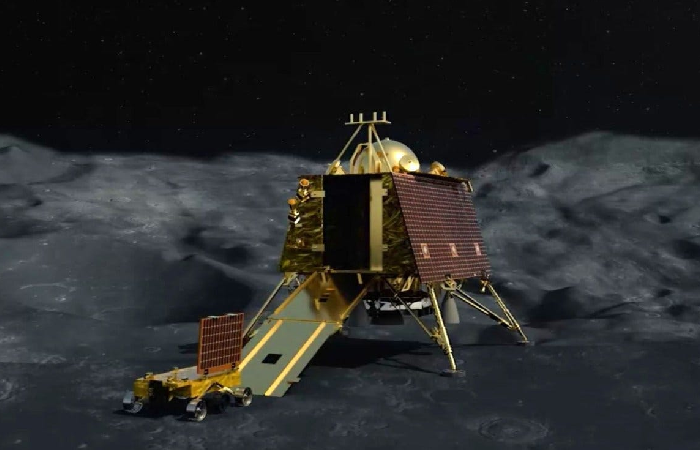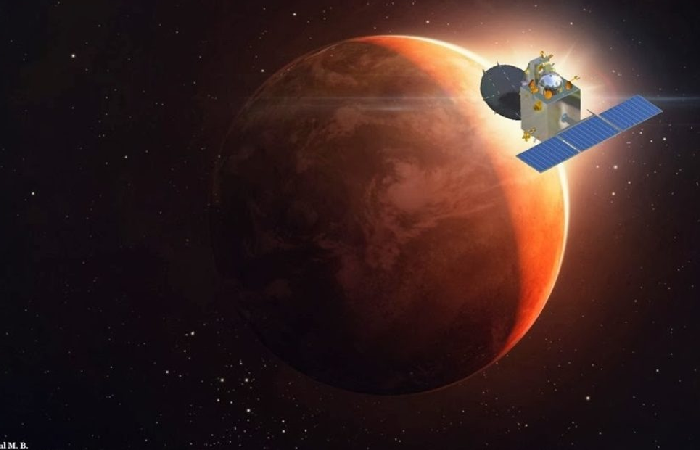Why it Costs India so Little to Travel In Space

India recently granted 227 billion rupees ($2.7 billion; £2.1 billion) for a number of ambitious space programs.
The ambitions include creating the first phase of India's first space station, developing a new reusable heavy-lifting rocket to launch satellites, sending an orbiter to Venus, and the next phase of the country's historic voyage to the Moon.
Why It Costs India so Little to Travel In Space
Although it is the biggest sum of money ever allotted to Indian space initiatives, the projects are far from extravagant given their scope and complexity, and this has once again shown how cost-effective India's space program is.
-
The low cost of the Indian Space Research Organization's (Isro) missions to the Moon, Mars, and Sun has astounded experts worldwide.
-
India paid $75 million on last year's groundbreaking Chandrayaan-3 and $74 million on the Mars orbiter Mangalyaan, which is less than the $100 million spent on the science fiction movie Gravity.
-
Russia's Luna-25, which crashed onto the Moon two days prior to Chandrayaan-3's arrival, cost 12.6 billion rubles ($133 million), while NASA's Maven orbiter cost $582 million.
-
Scientists claim that by striving to conduct worthwhile work, India is outperforming its peers despite the low cost.
-
Mangalyaan carried a payload to investigate methane in the Martian atmosphere, and Chandrayaan-1 was the first to prove that water was present in lunar soil. Space enthusiasts worldwide are eagerly examining the data and images transmitted by Chandrayaan-3.

So How Does India Maintain such Low Prices?
Mr. Das claims that the fact that all of Isro's technology is indigenous and that its machinery is made in India is one of the primary causes of the low cost of its missions.
-
He continues by saying that the limitations were "turned into a blessing in disguise" for the space program in 1974, following Delhi's first nuclear test, when the West imposed an embargo that prohibited technological transfer to India.
-
It served as a motivator for our scientists to create their own technologies. All of the equipment they required was produced locally, and labor costs and salaries were significantly lower here than in the US or Europe.
-
In contrast to Isro, NASA contracts with private firms to manufacture its satellites and purchases insurance for its missions, which raises the agency's expenses, according to science writer Pallava Bagla.
-
Additionally, India does not use engineering models, which are used to test a project prior to its real launch, like NASA does. We only create one model, and it's designed to fly. Although there is a probability of a crash, we accept the risk. And since it's a government program, we may accept it.
-
Isro employs significantly fewer people and pays cheaper compensation, which makes Indian programs competitive.
-
He claims that because they were so passionate about their work, he led small dedicated teams of less than 10 and people often worked extended hours without any overtime payments.
-
According to him, the projects' limited funding occasionally forced them to start over, but it also encouraged creative thinking and resulted in new inventions.
-
The $89 million budget allotted for Chandrayaan-1 was sufficient for the initial setup. However, it was then decided to add a Moon impact probe to the spacecraft, weighing an extra 35 kg.
There were two options available to the scientists:
- Either remove some of the hardware to lower the load, or
- Utilize a heavier rocket to carry the mission, which would cost more.

-
"We went with option number two. We cut the amount of batteries and pressure tanks from two to one, and we went from sixteen thrusters to eight.
-
Mr. Annadurai claims that because fewer batteries were needed, the launch had to happen before the end of 2008.
-
That would allow the spacecraft to orbit the Moon for two years without coming across a prolonged solar eclipse, which would affect its capacity to recharge. Therefore, in order to fulfill the launch deadline, we had to stick to a rigorous work schedule.
-
"We used most of the hardware we had already designed for Chandrayaan-2 after the second Moon mission got delayed," explains Mr. Annadurai, explaining why Mangalyaan was so inexpensive.
-
Mr. Bagla calls the low cost of India's space program "an amazing feat." However, as India grows, the price may increase.
-
He claims that because India doesn't have anything more powerful, they currently use tiny rocket launchers. However, that means it takes India's spacecraft a lot longer to get there.
-
As a result, Chandrayaan-3 circled the Earth multiple times before being sling-shot into lunar orbit, where it circled the Moon a few times before touching down. However, Russia's Luna-25 swiftly broke free of Earth's gravity on a potent Soyuz rocket.
-
"We were prodded to the Moon by Mother Earth's gravity. A great deal of creative planning was required. Isro is an expert at this and has done it numerous times with success.

Future Ahead:
India has stated that it intends to launch a manned expedition to the Moon by 2040, and in order to get the astronauts there more quickly, it will require a more potent rocket.
The new rocket's construction has already been authorized and is expected to be completed by 2032. Although it will cost more, this Next Generation Launch Vehicle (NGLV) will be able to carry greater weight.
According to Mr. Bagla, India is currently opening up the space industry to private companies, so it's unlikely that prices would stay that cheap after that.




